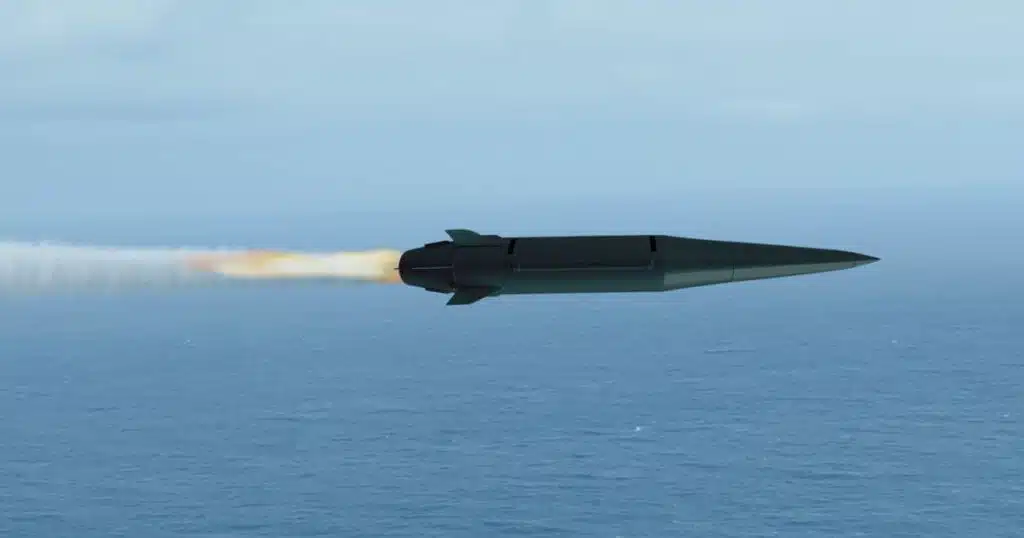
Hypersonic Missiles, the Golden Dome, and America’s Role in Reshaping a North American Defense Cooperation
The rapid evolution of missile technology rarely captures public attention, but within the defense community, the era of surprise over next-generation weapons is long past. Still, the advent of hypersonic missiles represents a significant shift—one that demands renewed scrutiny and strategic recalibration.
These missiles travel faster than five times the speed of sound, can maneuver mid-flight, and are incredibly unpredictable. Even setting aside their near immunity to current missile defense systems, hypersonic weapons present a fundamental challenge to established strategic assumptions. Traditional missile defense is calibrated to counter ballistic threats—projectiles that follow predictable, high-arc trajectories, like those intercepted by Israel’s Iron Dome. Hypersonics, by contrast, maneuver unpredictably at low altitudes and extreme speeds, rendering them both elusive and destabilizing. They may resemble a technological marvel, but in the context of great power competition, they are anything but a toy.
The operational implications are significant. Hypersonic weapons are not only harder to track and intercept—they expand the threat envelope to include both forward-deployed forces and civilian populations. In response, systems like the proposed Golden Dome aim to integrate advanced sensors and AI-driven interception capabilities to meet this emerging challenge. The goal is clear: shift interception points from urban centers like New York City to far earlier in the threat trajectory—ideally, over the Atlantic.
With nearly four million square miles of territory to protect, the United States is leading efforts to develop the Golden Dome system—a next-generation missile defense architecture designed for the threats of the 21st century. While headlines often focus on friction between the U.S. and its allies, the foundation of allied cooperation remains strong, especially when it comes to shared security. I saw this firsthand at an event this week at the House of Sweden, where representatives from Iceland, Denmark, Norway, Greenland, and Sweden all affirmed their commitment to collective defense. Their interest in contributing to the Golden Dome—rather than passively relying on U.S. capabilities—signals a meaningful shift. For many, this includes increasing defense spending and investing in key areas like sensor development. Canada, too, has expressed intent to support the project directly. This collaborative approach reflects a broader transformation in allied defense posture—one not seriously tested since World War II—and a clear recognition that defending the homeland is a shared imperative.
This collaboration reflects the modernization efforts of NORAD (North American Aerospace Defense Command) which is the organization responsible for monitoring and defending skies over North America. By integrating this advanced system into NORAD’s broader defense infrastructure, the U.S. and Canada position themselves to more effectively counter the threats of the future, regardless of the ocean between us and Russia.
The protection of our borders is the bedrock of U.S. national security policy, and a very loud focus for both the Trump administration, and the American voter. With countries like China and Russia aggressively pursuing advanced missile technologies, further evidence of a shift in global power dynamics, the U.S. cannot afford to slow down on innovation and development.
The Golden Dome system epitomizes this approach and a newly realigned defense strategy. By integrating this technology into our defense architecture, America sends a powerful message: your technology will not outpace ours and we are prepared to defend ourselves at all costs.
Yet, this concept of deterrence hinges on our credibility per the adversary’s belief that the U.S. will act. There is no doubt that the U.S.’s innovation outpaces all other nations; however, those nations take note when we slow down. That is not a risk we can take here; nor a risk that I am concerned over with our current administration. The Golden Dome enhances our credibility.
While recruitment and retention for our military are incredibly important, a concept often overlooked by those critical of our defense spending is that America’s military strength does not simply lie in the number of troops or weapons at its disposal; it is mutually rooted in our ability to innovate and adapt to new threats. The Golden Dome system exemplifies this adaptability, ensuring that the U.S. is not simply reactive to new technologies but is proactive in developing them and the solutions to counter them. The beauty of the American defense community is that the partnership of the government and the private sector makes a cutting-edge system like this well within reach.
As the world’s foremost military power, the U.S. continues to lead in developing and deploying defense systems that protect not only our own borders but also those of our allies. Through the Golden Dome system, America is demonstrating our capacity to innovate, deter, and defend against threats who desire to knock on our door.
Taylor Hathorn is a visiting fellow at Independent Women. She has over 10 years of experience in cybersecurity, policy, public relations, and non-profit management.
This article was originally published by RealClearDefense and made available via RealClearWire.



